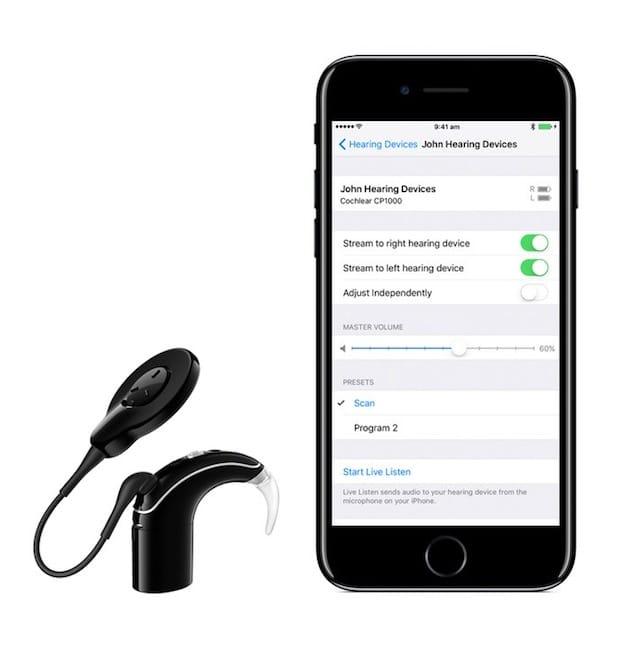Apple has created a variant of Bluetooth for hearing implants |igeneration
Cochlear's new hearing implant is the first of its kind to integrate a technology developed by Apple allowing the iPhone to transmit calls, music, podcasts or even Siri directly to the implant (read: Cochlear launches a Made for iPhone hearing implant). The audio quality is therefore there and the user can thus better enjoy his smartphone (and the life around him).
The Nucleus 7, whose installation requires surgery like all hearing implants (its electrodes stimulate nerves that send audio signals to the brain) also benefits from the FDA stamp; a first for the US federal agency, which therefore authorizes the marketing of a medical product connected to a smartphone or tablet.
Wired got some interesting details about how Apple has gone about providing a better quality of life for people who are deaf and use hearing aids or implants. "While our devices have supported hearing aids for years, we found that the experience of users trying to make a phone call was not always good," said Sarah Herrlinger, Director of Global Accessibility Policy. at Apple. "So we decided to bring together a lot of Apple people from different specialties to start working on how to improve the process."
The team in charge of accessibility has worked for several years on conventional hearing aids. Since then, there are many devices of this kind that accompany as many applications; Apple offers its connection protocol free of charge to the manufacturers of these devices, which in turn earns them a Made for iPhone badge. Within iOS, there are several settings to help people with deafness. A live listening function also allows you to use the microphones of the iPhone to better listen to conversations.

Working with cochlear implants has been more complex, if only to save as much as possible of the tiny batteries in the earpieces. "Our goal was to get rid of all those little things that take up battery power," continues Sarah Herrlinger, "When you get a phone call, you just tap the button to answer and have the sound play through implant”. This solution, which required many iterations for its development, required Apple to develop a variant of Bluetooth Low Energy (LE).
Everyone got involved: the design of this technology brought together engineers specializing in wireless, batteries and the interface. Ultimately, the result was Bluetooth Low Energy Audio (LEA). This system makes it possible to broadcast music and voice in high quality while retaining the economical properties of Bluetooth Low Energy. Without saying a word, this technology was integrated into the first MFi hearing aid released in… 2014. It is this protocol that is at the heart of the solution developed with Cochlear for hearing implants.
We still had to get back to work to take into account the specificities of cochlear implants. For example, there was a problem with the loss of data packets between the iPhone and the implant, which had to be compensated for by transmitting them again. Everything obviously had to be transparent for the user, who is content to activate the pairing of the implant with his iPhone directly from the accessibility settings, as if it were an ordinary Bluetooth speaker or a AirPods.
Wired has also obtained confirmation that this technology is not used in AirPods, even if Bluetooth LEA would make sense with wireless headphones, if only to save their very small batteries.
In addition, the Nucleus 7 Sound Processor integrates Apple's tracking system as part of a "Find My Processor" function which will allow you to find a lost prosthesis. Cohlear, which holds half of the market for hearing implants, is the first to benefit from the Cupertino manufacturer's developments, but Apple will offer all these technologies free of charge to manufacturers who want them.



![PAU - [ Altern@tives-P@loises ] PAU - [ Altern@tives-P@loises ]](http://website-google-hk.oss-cn-hongkong.aliyuncs.com/drawing/179/2022-3-2/21584.jpeg)

![Good deal: 15% bonus credit on App Store cards of €25 and more [completed] 🆕 | iGeneration Good deal: 15% bonus credit on App Store cards of €25 and more [completed] 🆕 | iGeneration](http://website-google-hk.oss-cn-hongkong.aliyuncs.com/drawing/179/2022-3-2/21870.jpeg)





Related Articles